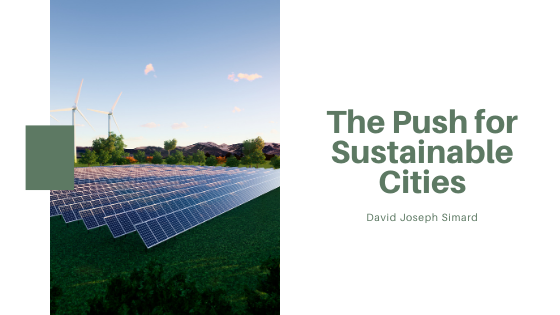Climate change continues to remain a popular topic for a good reason. Environmental concerns persist in nearly every industry. As we make positive changes to reduce and reverse the harm, considering how we can implement greener practices and standards in every aspect of our lives and societies will be essential. Creating sustainable cities takes immense research, planning, and collaboration, but the payoff is worthwhile.
As we continue to endure the COVID-19 pandemic, sustainable cities present opportunities to improve the way we live in urban areas, especially when considering residents’ health and safety. Historically, many of the systems and structures in place, such as modern sanitation systems and zoning codes, have arisen in the wake of pandemics. We can intuit that the urban standards moving forward will also reflect the issues made apparent during this time. By prioritizing a sustainable urban model, developers can account for the modern problems of existing cities while promoting a healthier environment for residents and society in general.
Here are a few things to keep in mind when considering the development of a sustainable city.
Efficient Use of Space and Walkability
As cities expand, the available space dwindles, and the use of such space is often inefficient and wasteful. Sustainable cities should plan for expansion, build vertically when possible, and repurpose existing buildings to suit new and changing demands.
It is also essential to consider how to encourage businesses and residents to share their spaces appropriately. Co-opts and shared ownership agreements are a few popular ways to promote optimized usage of available spaces. Modular office design and shared workspaces that encourage collaboration have grown in popularity, especially among younger entrepreneurs.
When developing a sustainable city, walkability should be a top priority in design plans. Walking and cycling paths will help residents reduce carbon emissions and boost their collective health, reducing healthcare costs and congestion.
Community Approach and Urban Growing
Sustainable cities should prioritize the facilitation of a sense of community among their residents. Shared spaces, community-oriented programming, and a collaborative environment dedicated to improving residents’ lives will aid in this endeavor. Creating a sustainable city should entail a mindset of social integration from the infrastructural level.
Because sustainable cities are oriented around environmental concerns, it is important to integrate green practices and initiatives in the plans. Urban growing is a broad concept that promotes a green environment, a sustainable food supply, and a sense of community. From community farms and rooftop gardens to school-sponsored agricultural initiatives and edible vegetation in common spaces, sustainable cities have a lot of room to innovate. In general, the approach to urban growth in a sustainable city should address how the city can provide food and greenery to its residents in an efficient, healthy, and sustainable fashion.
Sustainable cities are the undeniable way of the future, especially as the ongoing pandemic continues to incite reservations about urban living; with efforts to enhance safety and health, developers can make large-scale sustainability a reality. By making community, efficiency, and environmentalism top priorities, urban developers can create cities that fulfill their residences’ needs while promoting a positive environmental impact at the same time.

